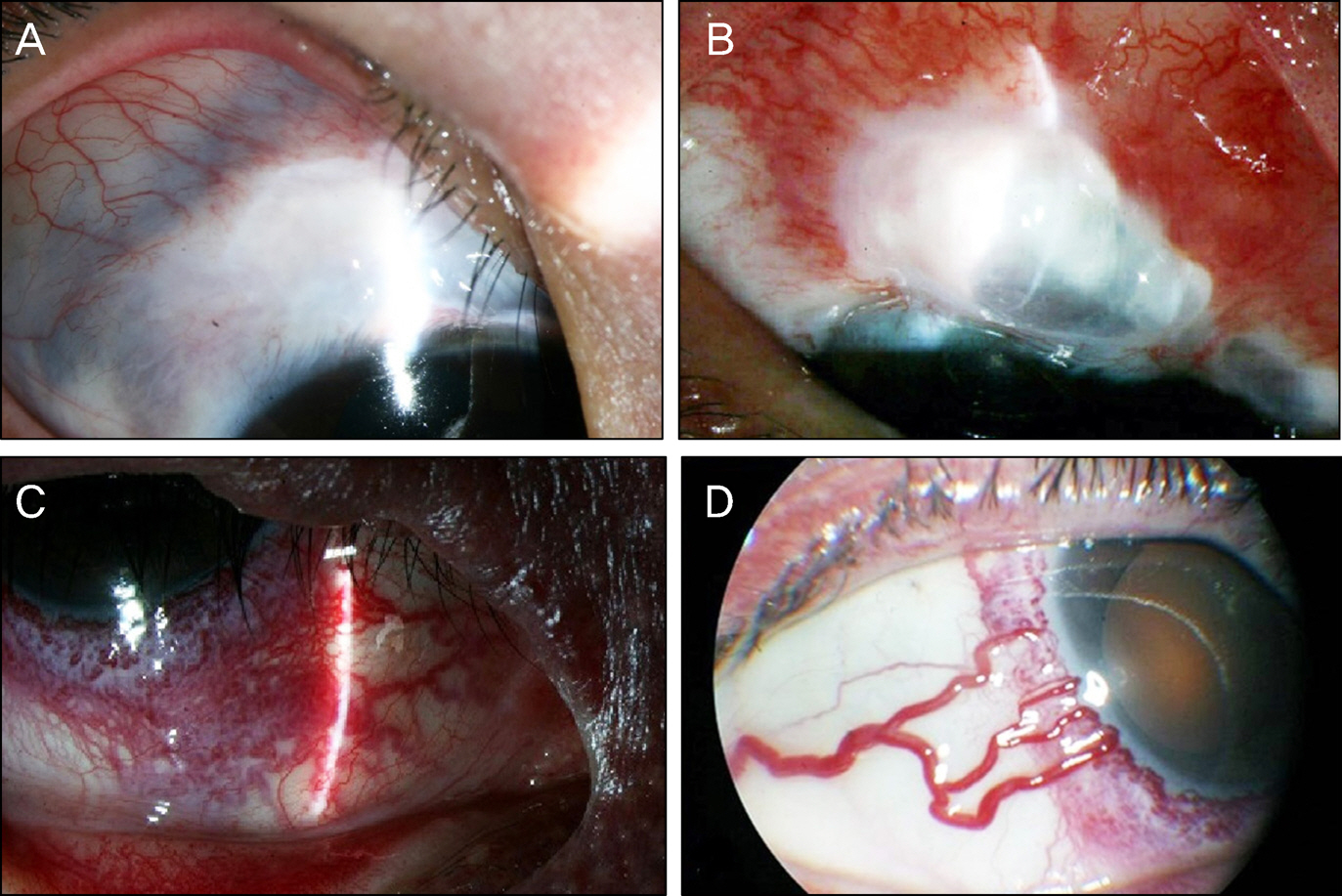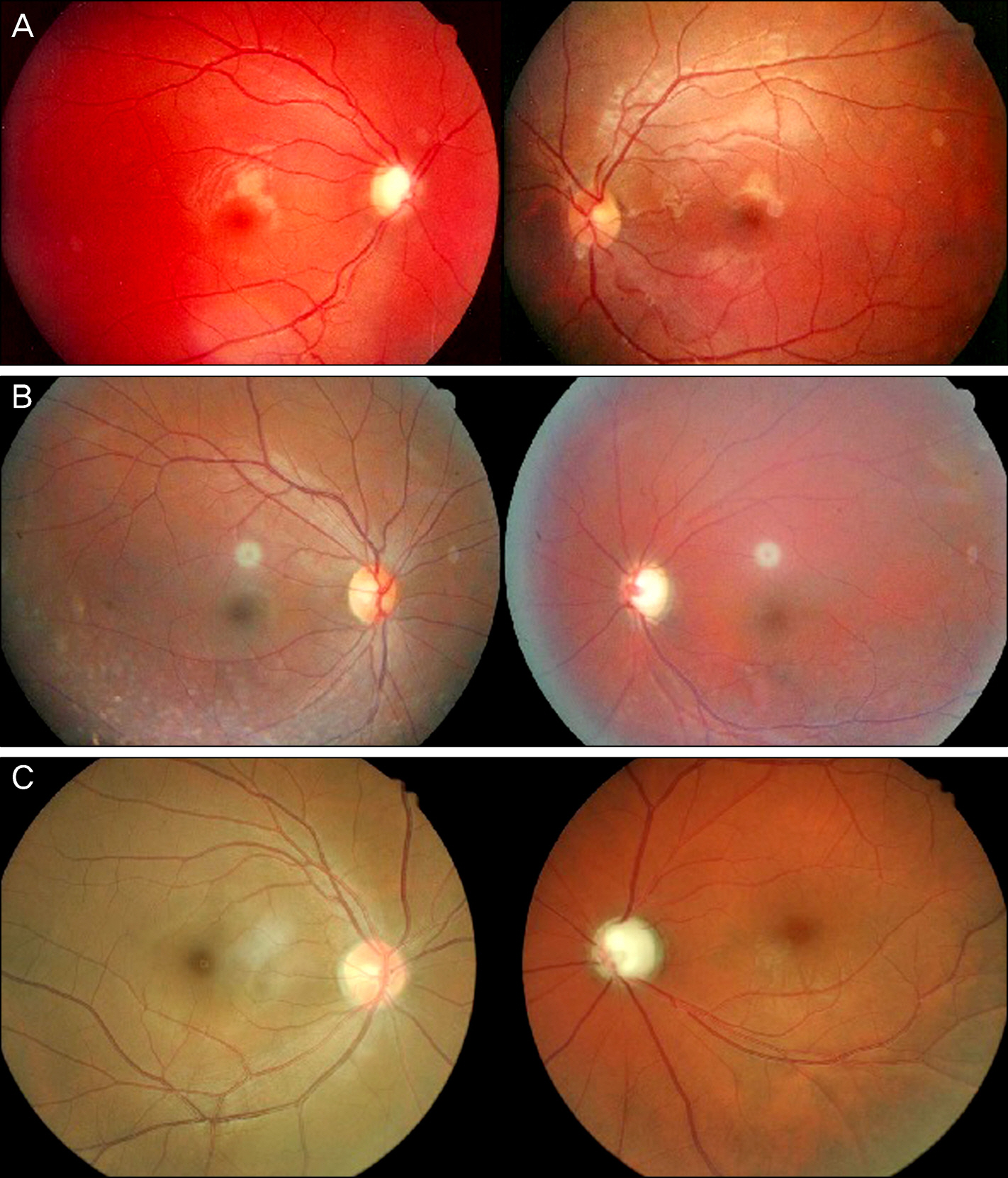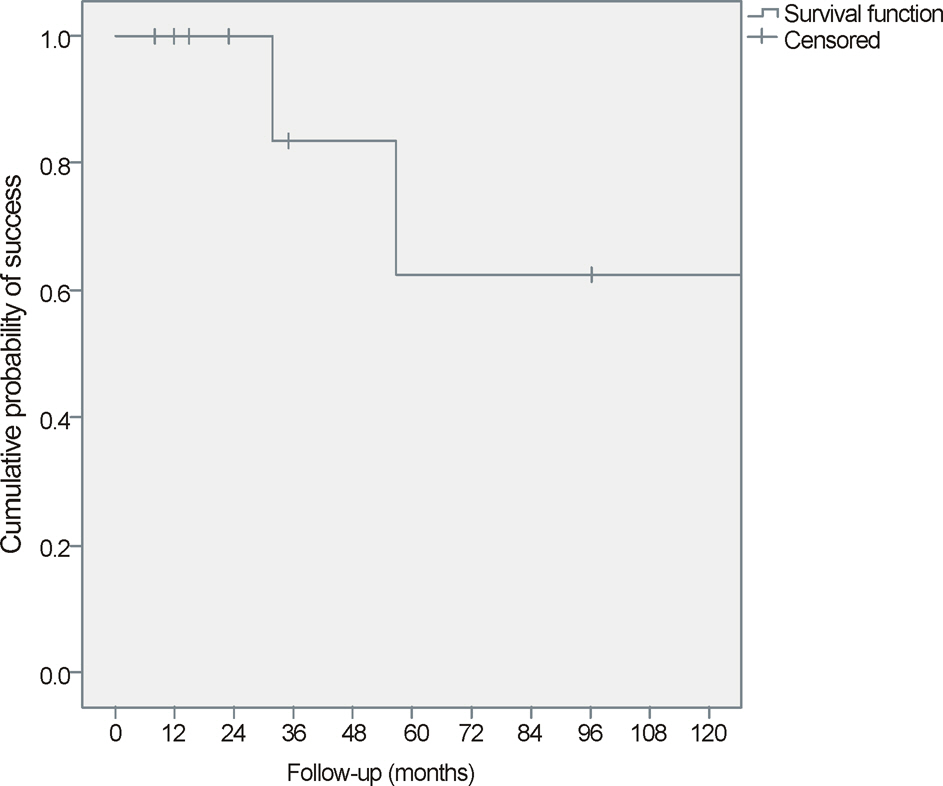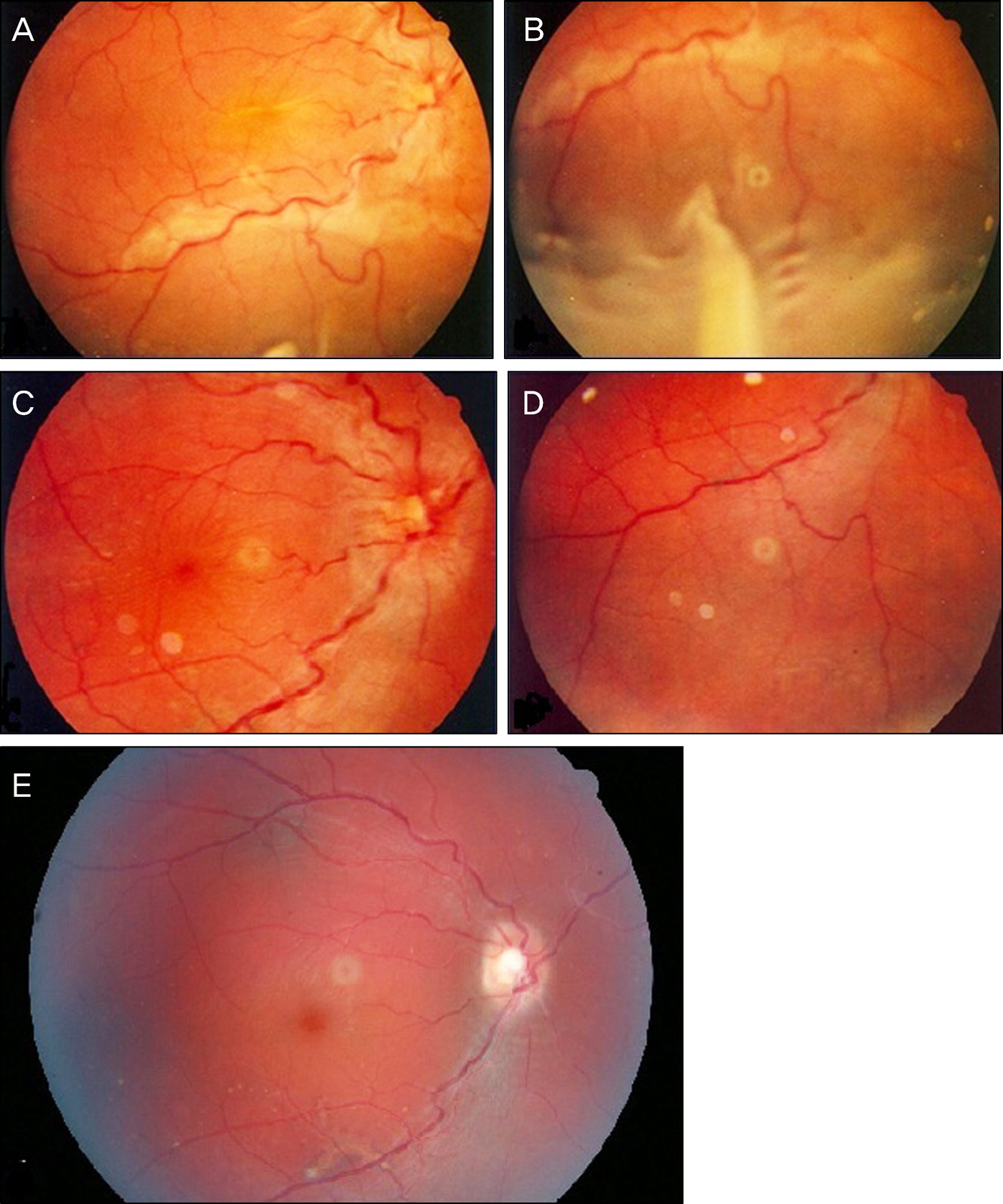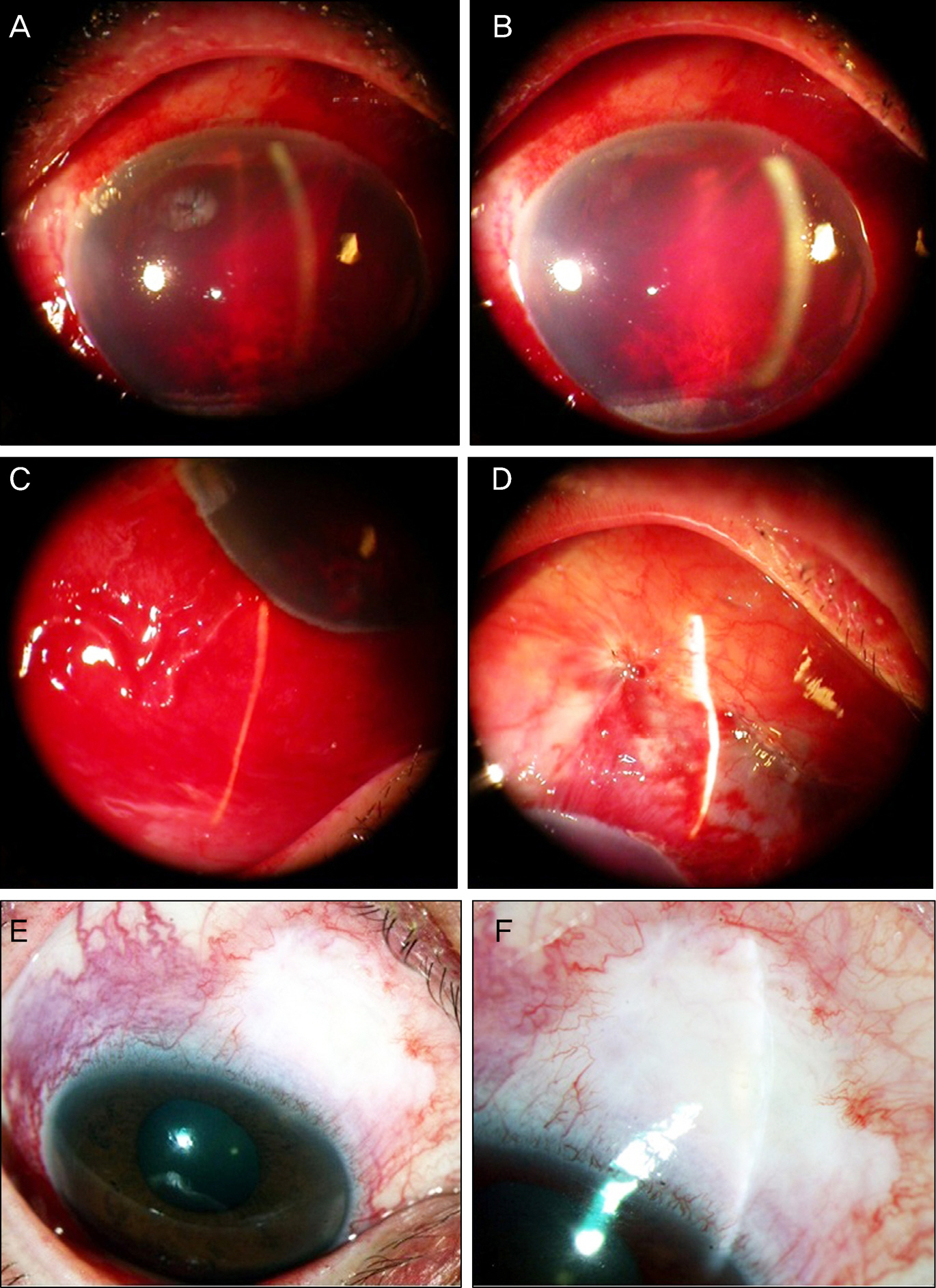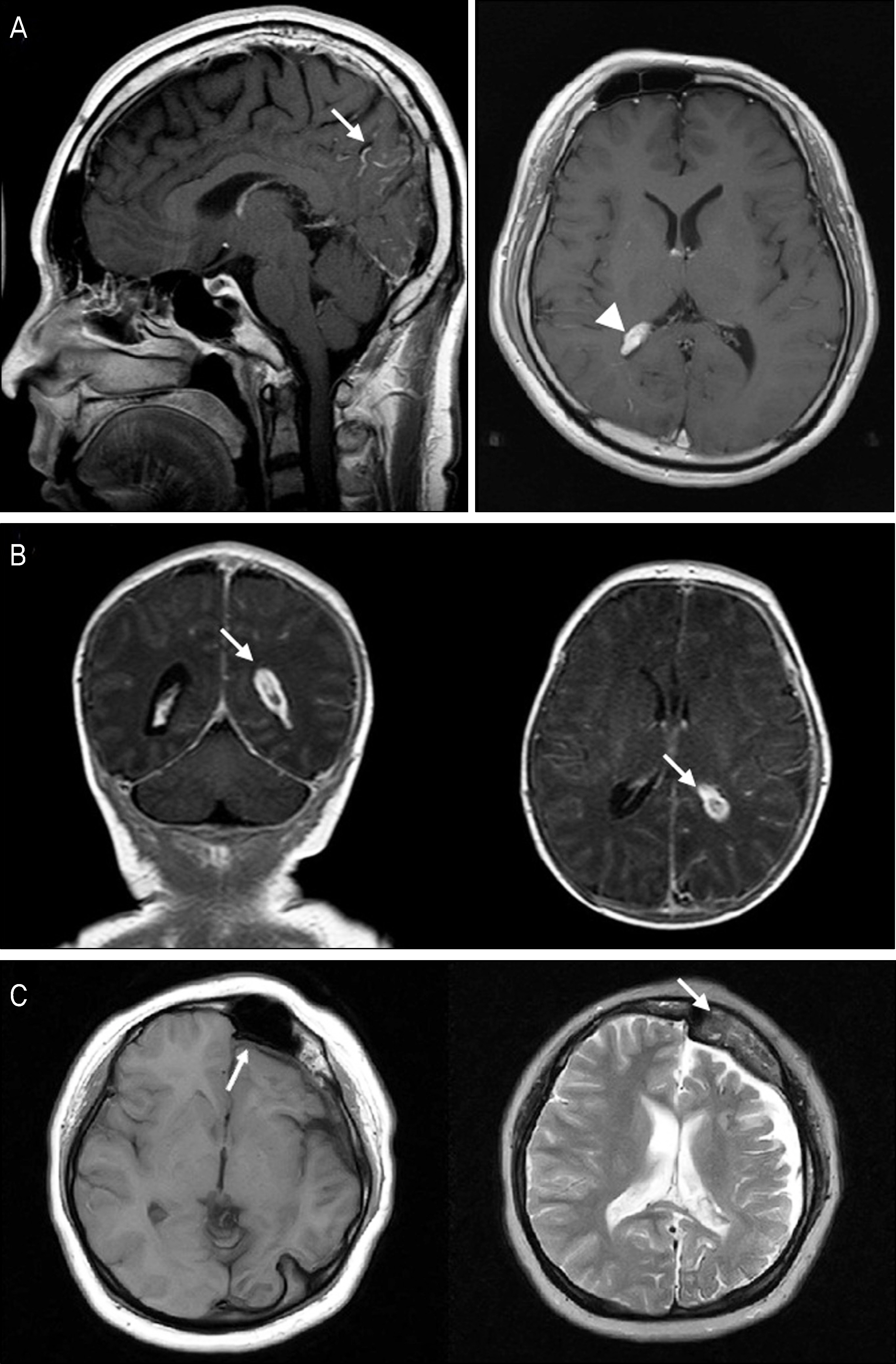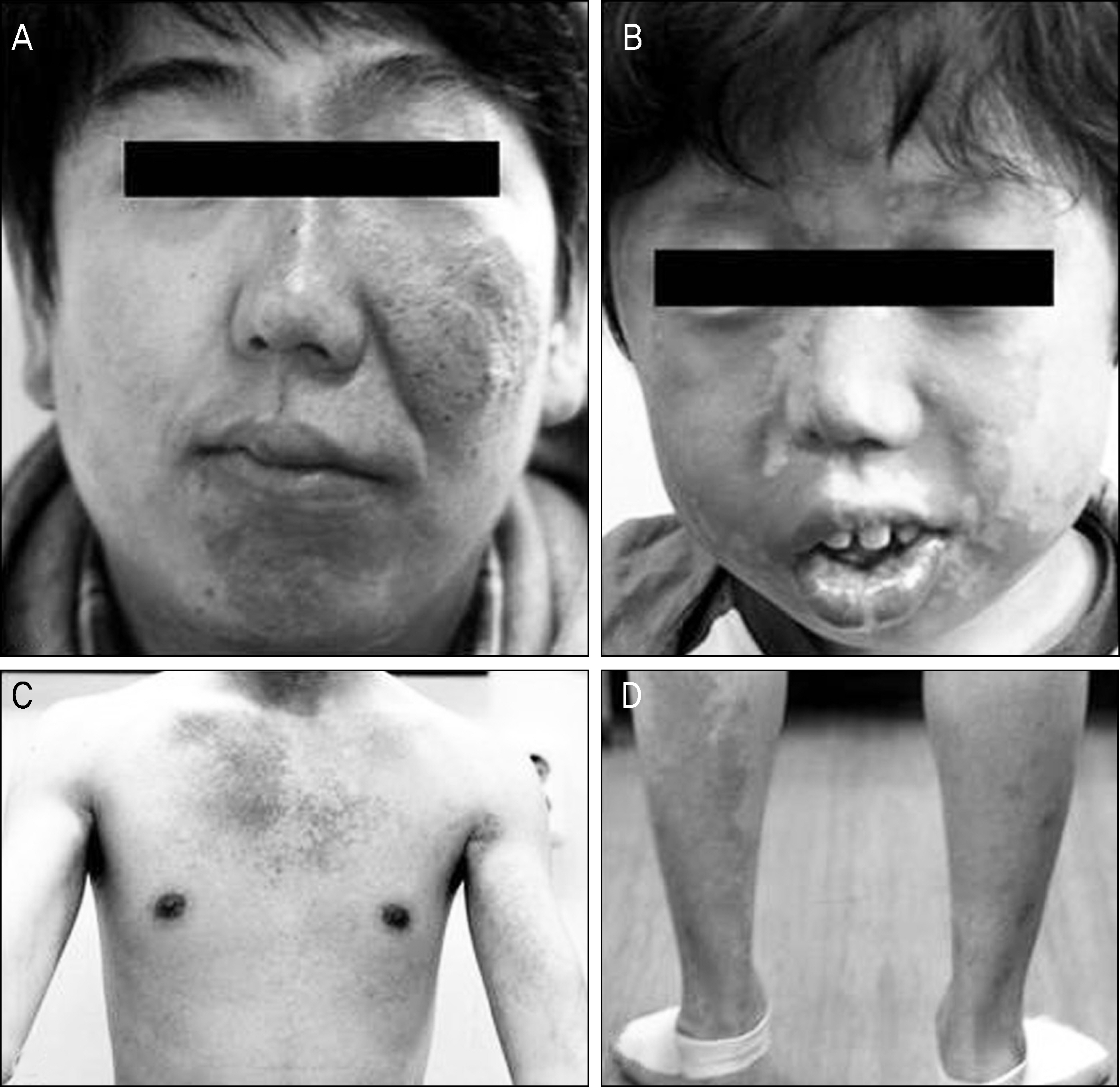J Korean Ophthalmol Soc.
2013 Nov;54(11):1737-1747. 10.3341/jkos.2013.54.11.1737.
Clinical Features and Surgical Outcomes of Sturge-Weber Syndrome with Glaucoma
- Affiliations
-
- 1Department of Ophthalmology, Yeungnam University College of Medicine, Daegu, Korea. sccha@yumail.ac.kr
- KMID: 2217922
- DOI: http://doi.org/10.3341/jkos.2013.54.11.1737
Abstract
- PURPOSE
To report clinical manifestations including neurocutaneous and ocular findings and to evaluate outcomes of trabeculectomy in patients with Sturge-Weber syndrome.
METHODS
The medical records of 10 eyes of 8 glaucoma patients with Sturge-Weber syndrome who were followed up for at least 1 year after trabeculectomy were reviewed retrospectively. We analyzed neurocutaneous and ocular findings, cumulative surgical success rates, and complications in patients with Sturge-Weber syndrome.
RESULTS
The mean patient age at the time of surgery was 12.6 +/- 13.0 years and mean follow-up period was 71.6 +/- 81.8 months. All patients showed various clinical findings including facial hemangioma (8 patients), seizure (6 patients), intracranial lesion (6 patients), developmental delay (4 patients), conjunctival/episcleral hemangioma (4 eyes), and choroidal hemangioma (4 eyes). Postoperative success was achieved in 8 out of 10 eyes (80.0%). Postoperatively, serous retinal detachment occurred in 2 out of 4 eyes with preoperative diffuse choroidal hemangioma.
CONCLUSIONS
Management of glaucoma associated with Sturge-Weber syndrome requires multidisciplinary treatment because of systemic involvement. Trabeculectomy appears to be an effective and relatively safe surgical option for glaucoma associated with Sturge-Weber syndrome. However, serious complications such as serous retinal detachment should be considered when planning trabeculectomy for patients with diffuse choroidal hemangioma.
MeSH Terms
Figure
Reference
-
References
1. Hunt HB, Moore RC. Encephalotrigeminal angiomatosis; (Sturge- Weber syndrome). Med Radiogr. 1951; 27:53–60.2. Cibis GW, Tripathi RC, Tripathi BJ. Glaucoma in Sturge-Weber syndrome. Ophthalmology. 1984; 91:1061–71.
Article3. Sujansky E, Conradi S. Outcome of Sturge-Weber syndrome in 52 adults. Am J Med genet. 1995; 57:35–45.
Article4. Sullivan TJ, Clarke MP, Morin JD. The ocular manifestations of the Sturge-Weber syndrome. J Pediatr Ophthalmol Strabismus. 1992; 29:349–56.
Article5. Kim JW, Park CH, Lee CH. Clinical experience of treatment in a case of Sturge-Weber syndrome with bilateral glaucoma. J Korean Ophthalmol Soc. 1996; 908–12.6. Bae JH, Cho HD, Woo SC. Serous retinal detachment following trabeculectomy in a case of Sturge-Weber syndrome with glaucoma. J Korean Ophthalmol Soc. 1996; 37:2150–3.7. Lee SH, Jung DY. Choroidal effesuion after trabeculetomy in glau- coma with Sturge-Weber syndrome. J Korean Ophthalmol Soc. 1999; 40:1164–8.8. Kim HB, Hong YJ, Kim YJ, Kim SW. A case of Sturge - Weber syndrome. J Korean Ophthalmol Soc. 1981; 22:273–6.9. Yoo HM, Chung I, Chang SK. A case of Sturge - Weber syndrome. J Korean Ophthalmol Soc. 1986; 27:723–8.10. Choi JS, Yi KP, Hong KY. A case of Sturge - Weber syndrome. J Korean Ophthalmol Soc. 1989; 30:459–64.11. Chung IH, Kim MH. Sturge - Weber syndrome with congenital oc- ular anomaly. J Korean Ophthalmol Soc. 1995; 36:2266–70.12. Lee CW, Choi DY, Oh YG, et al. An infantile case of Sturge-Weber syndrome in association with Klippel-Trenaunay-Weber syndrome and phakomatosis pigmentovascularis. J Korean Med Sci. 2005; 20:1082–4.
Article13. Cairns JE. Trabeculectomy. Preliminary report of a new method. Am J Ophthalmol. 1968; 66:673–9.14. Sharan S, Swamy B, Taranath DA, et al. Port-wine vascular mal- formations and glaucoma risk in Sturge-Weber syndrome. J AAPOS. 2009; 13:374–8.15. Parsa CF. Sturge-weber syndrome: a unified pathophysiologic mechanism. Curr Treat Options Neurol. 2008; 10:47–54.
Article16. Patrianakos TD, Nagao K, Walton DS. Surgical management of glaucoma with the sturge weber syndrome. Int Ophthalmol Clin. 2008; 48:63–78.
Article17. Ali MA, Fahmy IA, Spaeth GL. Trabeculectomy for glaucoma as- sociated with Sturge-Weber syndrome. Ophthalmic surgery. 1990; 21:352–5.18. Fontana H, Nouri-Mahdavi K, Lumba J, et al. Trabeculectomy with mitomycin C: outcomes and risk factors for failure in phakic open-angle glaucoma. Ophthalmology. 2006; 113:930–6.19. Keverline PO, Hiles DA. Trabeculectomy for adolescent onset glaucoma in the Sturge-Weber syndrome. J Pediatr Ophthalmol. 1976; 13:144–8.
Article20. Yang Q, Guo WY, Sun XH, et al. Clinical analysis on sixteen cases of Sturge-Weber syndrome-associated glaucoma. Zhonghua Yan Ke Za Zhi. 2009; 45:883–7.21. Bellows AR, Chylack LT Jr, Epstein DL, Hutchinson BT. Choroidal effusion during glaucoma surgery in patients with prom- inent episcleral vessels. Arch Ophthalmol. 1979; 97:493–7.22. Susac JO, Smith JL, Scelfo RJ. The “tomato-catsup” fundus in sturge-weber syndrome. Arch Ophthalmol. 1974; 92:69–70.
Article23. Tripathi BJ, Tripathi RC. Neural crest origin of human trabecular meshwork and its implications for the pathogenesis of glaucoma. Am J Ophthalmol. 1989; 107:583–90.
Article24. Dorairaj S, Ritch R. Encephalotrigeminal Angiomatosis (Sturge- Weber Syndrome, Klippel-Trenaunay-Weber Syndrome): A Review. Asia-Pac J Ophthalmol. 2012; 1:226–34.25. Beck RW, Hanno R. The phakomatoses. Int Ophthalmol Clin. 1985; 25:97–116.
Article26. Pascual-Castroviejo I, Díaz-Gonzalez C, García-Melian RM, et al. Sturge-Weber syndrome: study of 40 patients. Pediatr Neurol. 1993; 9:283–8.
Article27. Bebin EM, Gomez MR. Prognosis in Sturge-Weber disease: com- parison of unihemispheric and bihemispheric involvement. J Child Neurol. 1988; 3:181–4.28. Sujansky E, Conradi S. Sturge-Weber syndrome: age of onset of seizures and glaucoma and the prognosis for affected children. J Child Neurol. 1995; 10:49–58.
Article29. Klapper J. Headache in Sturge-Weber syndrome. Headache. 1994; 34:521–2.
Article
- Full Text Links
- Actions
-
Cited
- CITED
-
- Close
- Share
- Similar articles
-
- A Case of Sturge-Weber Syndrome
- Sturge-Weber Syndrome with Congenital Ocular Anomaly
- Anesthesia for a Sturge-Weber Syndrome Patient with Severe Facial Hemangioma: A case report
- Clinical Experience of Treatment in a Case of Sturge-Weber Syndrome with Bilateral Glaucoma
- Congenital Glaucoma from Sturge-Weber Syndrome: A Modified Surgical Approach

